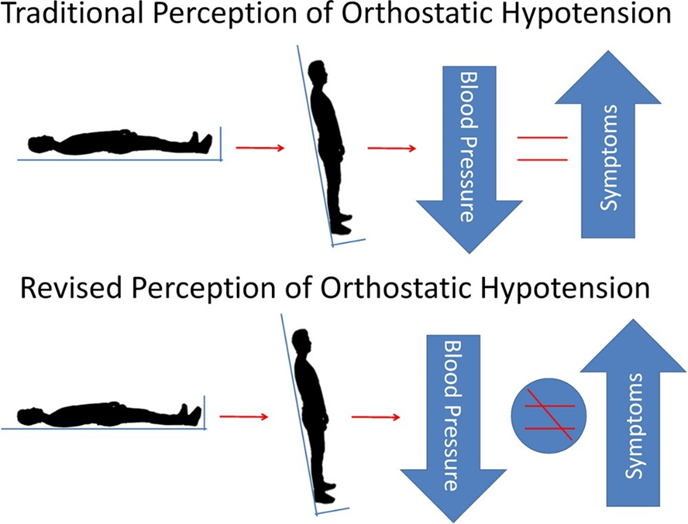When performing blood pressure measurements to assess for orthostatic hypotension, which action should the nurse implement first?
Record the client's pulse rate and rhythm.
Assist the client to stand at the bedside.
Apply the blood pressure cuff securely.
Position the client supine for a few minutes.
The Correct Answer is D
Choice A reason: Recording the client's pulse rate and rhythm is part of the assessment, but it is not the first action to take when assessing for orthostatic hypotension.
Choice B reason: Assisting the client to stand is part of the assessment process, but it should be done after the initial blood pressure and pulse have been measured while the client is supine.
Choice C reason: Applying the blood pressure cuff securely is necessary for an accurate reading, but it is not the first step in the process of assessing for orthostatic hypotension.
Choice D reason: The first action is to position the client supine for a few minutes before taking the initial blood pressure and pulse measurements, as this provides a baseline for comparison when the client stands.

Nursing Test Bank
Naxlex Comprehensive Predictor Exams
Related Questions
Correct Answer is ["D","E","F"]
Explanation
Choice A reason:
Exercising in the evening can actually be counterproductive for some people when it comes to sleep. While regular exercise is beneficial for overall health and can contribute to better sleep, doing it too close to bedtime can stimulate the body, making it harder to relax and fall asleep.
Choice B reason:
Watching television in bed is generally not recommended as part of good sleep hygiene. The light from the screen can interfere with the body's production of melatonin, the hormone that signals it's time to sleep, and engaging content can keep the brain alert rather than allowing it to wind down.
Choice C reason:
Taking an analgesic before bed is not a general recommendation for better sleep unless pain is a specific issue that is preventing sleep. It's important to address the root cause of insomnia rather than masking symptoms with medication.
Choice D reason:
Avoiding alcohol in the evening is a good practice for better sleep. Alcohol can disrupt the sleep cycle and lead to fragmented sleep, even though it may initially seem to help with falling asleep.
Choice E reason:
Going to bed and waking up at the same time every day helps to regulate the body's internal clock, or circadian rhythm, which can improve sleep quality. Consistency is key for this practice to be effective.
Choice F reason:
Avoiding naps, especially in the late afternoon or evening, can help ensure that you are sufficiently tired at bedtime. Napping can interfere with nighttime sleep if done too late in the day or for too long.
Choice G reason:
Eating a heavy meal before bed can lead to discomfort and indigestion, which can make it harder to fall asleep. It's best to have a light snack if needed and avoid large meals close to bedtime.
Correct Answer is ["0.8"]
Explanation
Amount (mg) ÷ Concentration (mg/mL) = Volume (mL)
Step 1: The amount of hydromorphone the patient needs is 3 mg. Step 2: The concentration of the hydromorphone solution is 4 mg/mL. Step 3: Substitute the values into the formula: 3 mg ÷ 4 mg/mL.
Step 4: Calculate the volume: 3 ÷ 4 = 0.75 mL. 0.8 rounded to the nearest tenth
Whether you are a student looking to ace your exams or a practicing nurse seeking to enhance your expertise , our nursing education contents will empower you with the confidence and competence to make a difference in the lives of patients and become a respected leader in the healthcare field.
Visit Naxlex, invest in your future and unlock endless possibilities with our unparalleled nursing education contents today
Report Wrong Answer on the Current Question
Do you disagree with the answer? If yes, what is your expected answer? Explain.
Kindly be descriptive with the issue you are facing.
